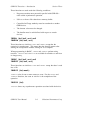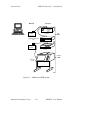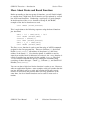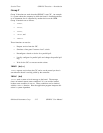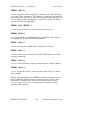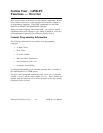GPIB-PC Functions — Introduction Section Three
GPIB-PC User Manual 3-12 ©National Instruments Corp.
IBWRT (bd,buf,cnt) and
IBWRTA (bd,buf,cnt)
Both functions use the specified board to write to one or more devices
that have already been addressed to listen (for example, by the IBCMD
or IBCMDA function). The syntax for these low-level functions is the
same as their high-level counterparts of Group I and III. The software
automatically differentiates between bd descriptors that refer to devices
and those that refer to boards, and executes the write operations
appropriately.
IBWRTI and IBWRTIA are also available in BASIC for binary transfers
from an integer array.
IBSTOP (bd)
IBSTOP aborts any asynchronous operation associated with the board.
IBWAIT (bd,mask)
IBWAIT waits for the specified board to detect one of the events
selected in the mask bit vector to occur. These events include the
completion of asynchronous input/output (CMPL); the board becoming a
talker (TACS), listener (LACS), or Controller-In-Charge (CIC);
detection of a GPIB Service Request (SRQI); assertion of the Attention
signal (ATN); detection of the END message (END); or detection of a
time limit (TIMO) or other error condition (ERR).
IBTMO (bd,v)
IBTMO changes the time limit in which operations with the board must
complete.
IBONL (bd,v)
IBONL performs the same initialization function for boards as the Group
III IBONL function does for devices. In addition, the hardware as well
as the software is reset and the board is placed online (enabled) or
offline (disabled).
IBSIC (bd)
IBSIC uses the board to initialize the GPIB by sending the Interface
Clear (IFC) message.





